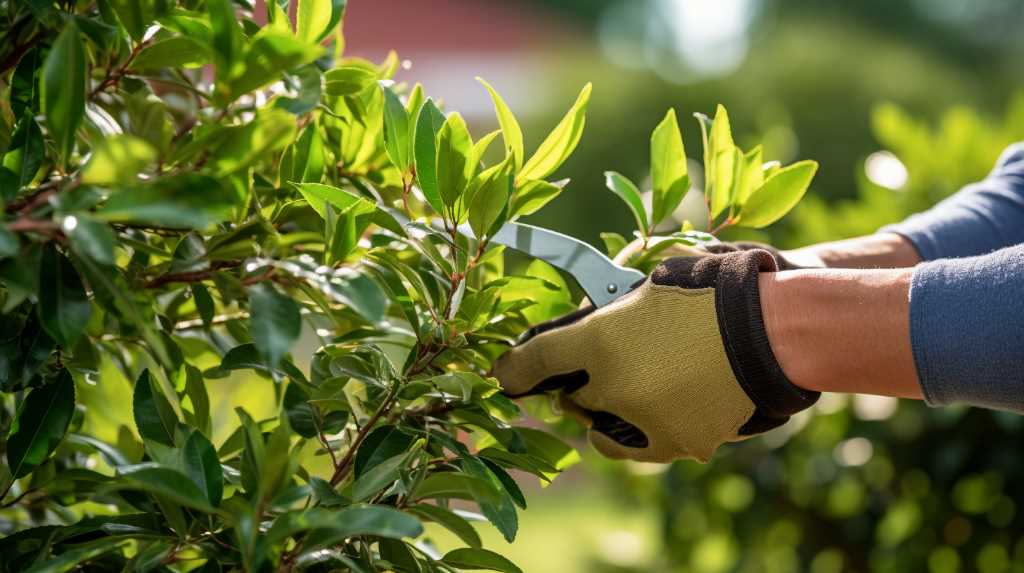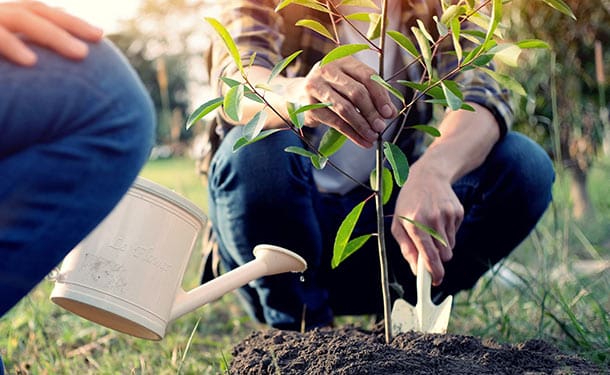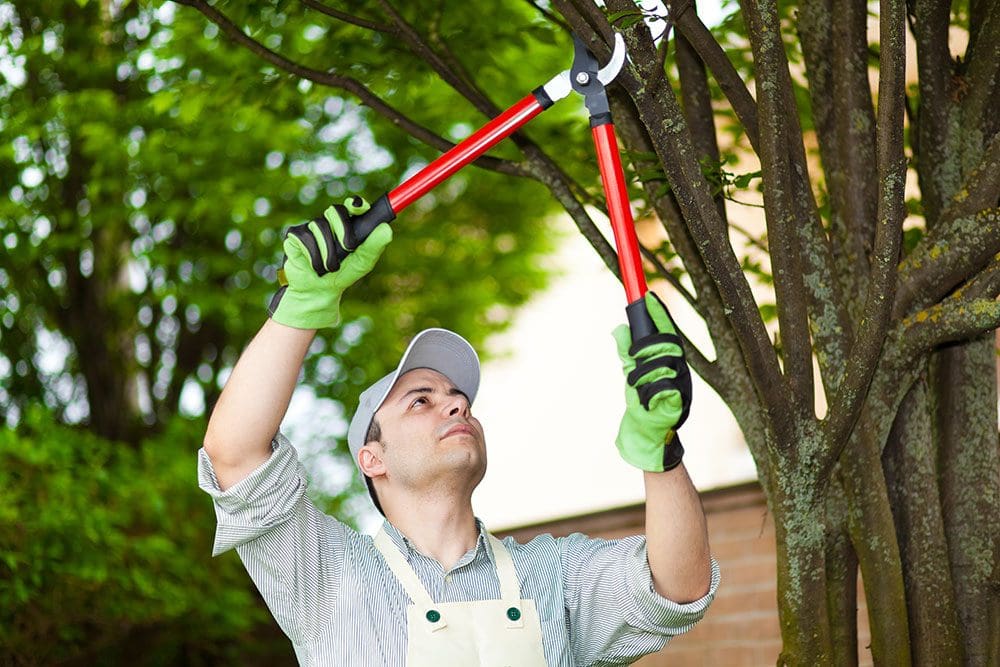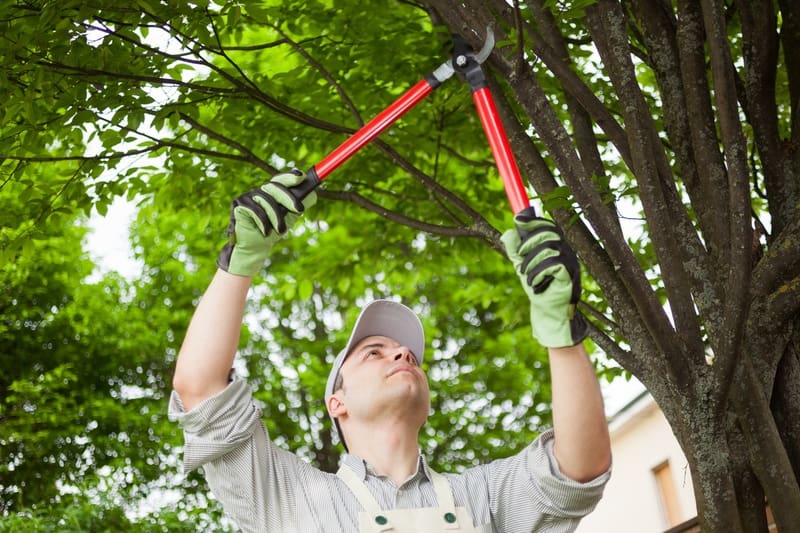Safety and Regulations
11 Essential Techniques for Effective Tree Pruning


I’ve got 11 essential techniques that’ll make your tree pruning game stronger than ever.
Whether you’re a seasoned pro or just starting out, these techniques will help you achieve effective and beautiful results.
From choosing the right tools to understanding tree growth patterns, I’ve got you covered.
Learn how to identify the right time to prune, remove dead branches, and promote air circulation within the canopy.
Get ready to become a tree pruning expert and join the community of skilled arborists.
Choose the Right Pruning Tools
To ensure optimal results, I prefer selecting the appropriate pruning tools based on the specific needs of the tree. Choosing the right tools is crucial for effective tree pruning.


Different types of trees require different tools, so it’s important to understand the specific requirements of each tree species. For example, when pruning smaller branches, I rely on handheld pruning shears or loppers. These tools provide the precision needed to make clean cuts without damaging the tree.
For larger branches, a pruning saw is necessary to ensure a clean and controlled cut. It’s essential to have a well-maintained set of tools to ensure safety and efficiency while pruning.
Understanding the growth patterns of trees will also help determine the appropriate pruning techniques to promote healthy growth and maintain the desired shape.
Understand Tree Growth Patterns
Understanding tree growth patterns plays a crucial role in effective tree pruning. By comprehending how trees grow and develop, we can make informed decisions about where and how to prune to achieve desired outcomes.
Tree growth patterns vary depending on the species, but they generally exhibit apical dominance, meaning that the central leader or main stem grows taller and stronger than lateral branches. Pruning techniques should take into account this natural growth habit and promote the formation of a strong, well-balanced structure.
Understanding how branches are attached to the main stem, such as the angle of attachment, can also help determine which branches are at risk of failure and require pruning.
Identify the Right Time to Prune
Now that we understand tree growth patterns, let’s determine the optimal time to prune for maximum effectiveness.


Pruning at the right time is crucial for the overall health and growth of the tree. The key is to prune during the dormant season, which is typically during late winter or early spring. Pruning during this time allows the tree to recover quickly and promotes vigorous new growth in the upcoming season. It also minimizes the risk of diseases and pests, as wounds heal faster during the dormant period.
However, it’s important to note that some trees have specific pruning requirements. For example, flowering trees should be pruned after they bloom to avoid removing flower buds. Consulting a professional arborist can help determine the ideal pruning time for specific tree species.
Remove Dead or Diseased Branches
When it comes to tree pruning, one essential technique is to remove dead or diseased branches. This practice not only prevents further damage to the tree but also promotes healthy growth.
Prevents Further Tree Damage
How can I effectively prevent further tree damage by removing dead or diseased branches? Pruning dead or diseased branches is crucial for maintaining the health and longevity of a tree. By removing these branches, you can prevent further damage and promote a thriving tree. Here are three reasons why removing dead or diseased branches is essential:
- Prevents the spread of diseases: Diseased branches can easily spread infections to other parts of the tree, potentially causing widespread damage and even death.
- Reduces the risk of falling branches: Dead branches are weak and brittle, making them prone to breaking and falling, posing a safety hazard to people and property.
- Enhances overall tree health: By removing dead or diseased branches, you allow the tree to allocate resources more efficiently, promoting healthier growth and vitality.
Removing dead or diseased branches not only prevents further tree damage but also promotes healthy growth.
Promotes Healthy Growth
To promote healthy growth, I remove dead or diseased branches from the tree. This is a crucial step in tree pruning as it eliminates potential sources of harm and allows for new, healthy growth.
Dead or diseased branches can negatively impact the overall health of the tree by limiting its ability to receive nutrients and water. By removing these branches, the tree can redirect its resources to other parts, promoting healthy growth and preventing further damage.


Regularly inspecting and removing dead or diseased branches also helps to prevent the spread of diseases or pests throughout the tree. Removing these branches not only benefits the tree’s health but also enhances its appearance.
With the removal of dead or diseased branches, we can now move on to the next step of pruning for improved tree structure.
Prune for Improved Tree Structure
Pruning trees enhances their overall structure and promotes healthier growth. When pruning for improved tree structure, there are three key techniques to consider:
- Crown thinning: By selectively removing branches, the tree’s canopy becomes less dense, allowing more sunlight and air to reach the inner branches. This promotes better overall growth and reduces the risk of disease.
- Crown raising: This technique involves removing lower branches to increase clearance beneath the tree. It not only improves visibility and access but also prevents potential hazards, such as branches obstructing pathways or interfering with structures.
- Crown reduction: When a tree has overgrown or unbalanced branches, crown reduction can be performed to reduce the height or spread. This helps maintain a more proportional structure and prevents the tree from becoming top-heavy or vulnerable to storm damage.
Use Proper Pruning Techniques
When considering the proper techniques for pruning trees, it’s important to focus on precision and attention to detail. Proper pruning techniques not only help maintain the health and structure of the tree, but also enhance its aesthetic appeal.
One essential technique is making clean cuts. This involves using sharp pruning tools to create smooth, even cuts that minimize damage and promote healing.
Additionally, it’s crucial to prune at the right time. Pruning during the dormant season, when trees are less susceptible to disease and pests, can further encourage healthy growth.
Another important technique is pruning for the tree’s natural form. By removing crossing branches and maintaining a balanced canopy, the tree can develop a stronger and more visually pleasing structure.


Using these proper pruning techniques will help ensure the long-term health and vitality of trees, creating a sense of belonging in any landscape.
Consider the Tree Species
Considering the tree species is crucial for effective tree pruning as it allows for a tailored approach that takes into account the specific needs and characteristics of each tree. By understanding the unique attributes of different tree species, we can ensure that our pruning techniques are appropriate and beneficial.
Here are three important factors to consider when pruning based on tree species:
- Growth habits: Different tree species have varying growth patterns and habits. Understanding these habits will help determine where and how to prune to promote healthy growth.
- Disease resistance: Some tree species are more susceptible to certain diseases than others. By considering the tree species, we can identify potential disease risks and take preventive measures during pruning.
- Pruning goals: Each tree species has different goals for pruning, such as enhancing flower production or shaping the tree’s structure. Knowing these goals allows us to prune with intention and achieve the desired outcomes.
Understand the Purpose of Pruning
To effectively prune a tree, it’s essential to understand the purpose behind the process. Pruning serves several key purposes, all of which contribute to the overall health and appearance of the tree.
First and foremost, pruning helps to remove dead, damaged, or diseased branches, preventing the spread of infection and improving the tree’s overall vigor.
Additionally, pruning can shape the tree’s structure, encouraging proper growth and preventing the development of weak or overcrowded branches.
Pruning also promotes air circulation and sunlight penetration, reducing the risk of fungal diseases and promoting the development of healthy foliage.


Lastly, pruning can help manage the size of the tree, preventing it from encroaching on nearby structures or obstructing views.
Understanding these purposes will guide you in making informed pruning decisions that will benefit the tree in the long run.
Promote Air Circulation Within the Canopy
Promoting air circulation within the canopy is vital for maintaining the health and vitality of a tree. It allows for better gas exchange, reduces the risk of disease, and promotes overall growth. Here are three techniques to promote air circulation within the canopy:
- Selective pruning: Remove dead, damaged, and crossing branches to open up the canopy. This allows air to flow freely and reduces the risk of branches rubbing against each other and creating wounds.
- Thinning: Thin out the canopy by selectively removing some branches. This helps to reduce overcrowding and allows more light and air to penetrate the tree’s interior.
- Canopy elevation: Raise the lower branches to create space underneath the tree. This improves air circulation and prevents moisture buildup, which can lead to fungal infections.
Maintain a Balanced Tree Shape
As an arborist, I frequently prioritize maintaining a balanced tree shape to ensure optimal growth and aesthetics. A balanced tree shape is vital for the overall health and structure of the tree.
By removing excess branches and maintaining a proper ratio of canopy to trunk, we promote even distribution of resources, such as sunlight and nutrients, throughout the tree. This allows for uniform growth and prevents the development of weak or imbalanced branches that could potentially break or cause damage.
In addition to promoting healthy growth, maintaining a balanced tree shape also enhances the visual appeal of the tree. A well-proportioned canopy with a balanced shape creates a harmonious and pleasing aesthetic, contributing to the sense of belonging in the surrounding landscape.
Regularly Monitor and Adjust Pruning Techniques
To ensure effective tree pruning, it’s crucial to regularly monitor and adjust pruning techniques. This involves paying attention to pruning frequency and timing, as well as adapting to the growth patterns of the tree.


Pruning Frequency and Timing
I regularly monitor and adjust the pruning techniques to ensure optimal pruning frequency and timing. This is crucial for the health and growth of trees, as improper pruning can lead to weak tree structures and reduced vigor. Here are three key factors to consider when determining the pruning frequency and timing:
- Tree species: Different trees have varying growth rates and pruning needs. Understanding the specific requirements of each tree species will help in determining how often and when to prune.
- Tree age: Younger trees require more frequent pruning to shape their growth and establish a strong structure. As trees mature, pruning frequency can be adjusted to maintain their health and aesthetics.
- Environmental conditions: Factors such as weather patterns, pests, and diseases can impact tree growth. Regularly monitoring these conditions will help in adapting pruning practices accordingly.
By carefully considering these factors, we can ensure that pruning is performed at the right frequency and timing, promoting healthy tree growth and longevity.
Now, let’s explore the next section on adapting to tree growth.
Adapting to Tree Growth
To adapt to tree growth, I regularly monitor and adjust my pruning techniques. As trees grow, their branches and limbs may develop in unexpected ways, potentially obstructing views, interfering with power lines, or encroaching on structures. By staying vigilant and regularly observing tree growth patterns, I can identify areas that require pruning to maintain the tree’s health and aesthetics, while also addressing any potential hazards.
Adjusting pruning techniques involves assessing the direction and angle of branch growth, as well as the overall balance and structure of the tree. This allows me to make precise cuts that encourage desired growth and promote the tree’s long-term health.
Through regular monitoring and adjustment, I ensure that my pruning techniques are tailored to the unique growth patterns of each tree, resulting in healthier, more visually appealing landscapes.


Hello there! I’m Logan Foster, the green-thumbed social media marketer behind the vibrant world of 1800TreeGuy.com. With roots firmly planted in arboriculture, I’ve branched out to help clients cultivate their dream outdoor spaces, one leafy canopy at a time. My knack for nurturing nature is more than a profession—it’s a way of life.
When I’m not talking trees and teaching the art of arboreal care, you can find me cheering on the Bulldogs—my alma mater’s pride and my forever team. My environmental studies there didn’t just teach me about ecosystems; they instilled a lifelong passion for protecting our planet.
Off the clock, I’m an adventurer at heart. Whether it’s trekking the Appalachian trails, pedaling down a mountain path, or crafting guides to share the wonders of the wild, I’m happiest with soil under my nails and the sun on my face. And let’s not forget Yoda, my pug sidekick. He may not have mastered the art of stillness, but his joyful grins are my daily dose of happiness.
I’m all about making connections—between people and the great outdoors and between my clients and their ideal landscape visions. My approach is personal; every tree has a story, and every garden reflects its caretaker.
If you want to green your scene or share in my outdoor escapades, give me a shout on Instagram or Facebook. Let’s cultivate a conversation and grow a community rooted in a love for the lush life.







